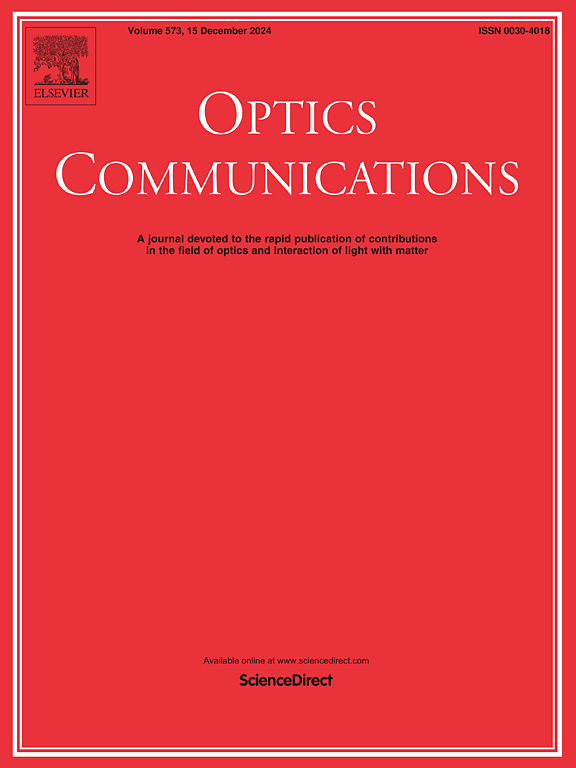Ultra-thin reflective terahertz-field projector using Vanadium dioxide Sierpinski metamaterial broadband absorber
IF 2.2
3区 物理与天体物理
Q2 OPTICS
引用次数: 0
Abstract
Display and projector technologies are well-known in the optical domain but are largely unknown in the terahertz (THz) domain. This work demonstrates the ultrathin reflective THz-field projector using a Vanadium dioxide (VO2) based Metamaterial (MTM) near-perfect absorber. The inclusion of the Sierpinski pattern in the MTM design creates dipole, quadrupole, and higher-order electromagnetic modes due to the greater number of resonating sharp edges that are intrinsically present in the design resulting in the broadband absorptance of 99.37 %. The absorptance for TE and TM polarization was calculated and the broadband exists from 0° to 70° of the incident angle. Utilizing this, an equivalent eight-segment THz reflective field projector is proposed. All the English alphabets and the Arabian numerics were displayed using the tuning property of VO2, and the acronym ‘SZU’ was displayed to showcase the display effect without any disruption from the adjacent pixels. The proposed THz reflective field projector has the potential to serve the multidisciplinary domains of astrophysics, encrypted communication, THz holograms, and anti-counterfeiting measures.
求助全文
约1分钟内获得全文
求助全文
来源期刊

Optics Communications
物理-光学
CiteScore
5.10
自引率
8.30%
发文量
681
审稿时长
38 days
期刊介绍:
Optics Communications invites original and timely contributions containing new results in various fields of optics and photonics. The journal considers theoretical and experimental research in areas ranging from the fundamental properties of light to technological applications. Topics covered include classical and quantum optics, optical physics and light-matter interactions, lasers, imaging, guided-wave optics and optical information processing. Manuscripts should offer clear evidence of novelty and significance. Papers concentrating on mathematical and computational issues, with limited connection to optics, are not suitable for publication in the Journal. Similarly, small technical advances, or papers concerned only with engineering applications or issues of materials science fall outside the journal scope.
 求助内容:
求助内容: 应助结果提醒方式:
应助结果提醒方式:


